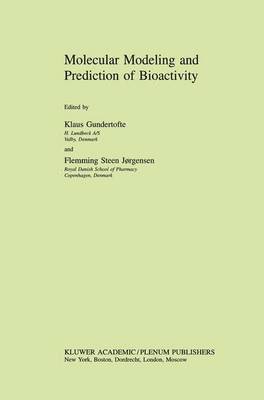
- Format
- Häftad (Paperback / softback)
- Språk
- Engelska
- Antal sidor
- 502
- Utgivningsdatum
- 2000-01-01
- Upplaga
- Softcover reprint of the original 1st ed. 2000
- Förlag
- Kluwer Academic/Plenum Publishers
- Medarbetare
- Gundertofte, Klaus (red.)/Jorgenson, Fleming Steen (red.)
- Illustrationer
- XVI, 502 p.
- Dimensioner
- 257 x 173 x 35 mm
- Vikt
- Antal komponenter
- 1
- Komponenter
- 1 Paperback / softback
- ISBN
- 9780306462177
- 1153 g
Molecular Modeling and Prediction of Bioactivity
- Skickas från oss inom 10-15 vardagar.
- Fri frakt över 249 kr för privatkunder i Sverige.
Passar bra ihop
De som köpt den här boken har ofta också köpt The Anxious Generation av Jonathan Haidt (inbunden).
Köp båda 2 för 1463 krKundrecensioner
Innehållsförteckning
Section I: Overview. . Section II: New Developments and Applications of Multivariate QSAR. Section III: The Future of 3D-QSAR. Section IV: Prediction of Ligand-Protein Binding. Section VI:Affinity and Efficacy Models of G-Protein Coupled Receptors. Section VII: New Methods in Drug DiscoverySection VIII: Modeling of Membrane Penetration. Section IX: Poster Presentations. Poster Session I: New Developments and Applications of Multivariate QSAR. Poster Session II: The Future of 3D-QSAR. Poster Session III: Prediction of Ligand-Protein Binding. Poster Session IV: Computational Aspects of Molecular Diversity and Combinatorial Libraries. Poster Session V: Affinity and Efficacy Models of G-Protein Coupled Receptors. Poster Session VI: New Methods in Drug Discovery. Poster Session VII: Modelling of Membrane Penetration. Author Index. Subject Index.


